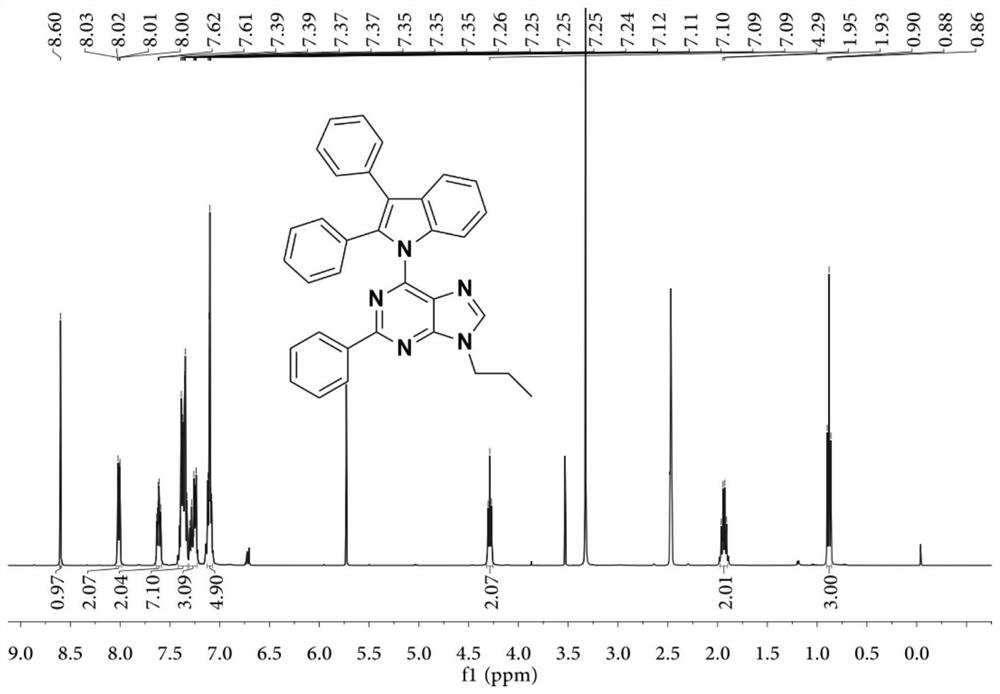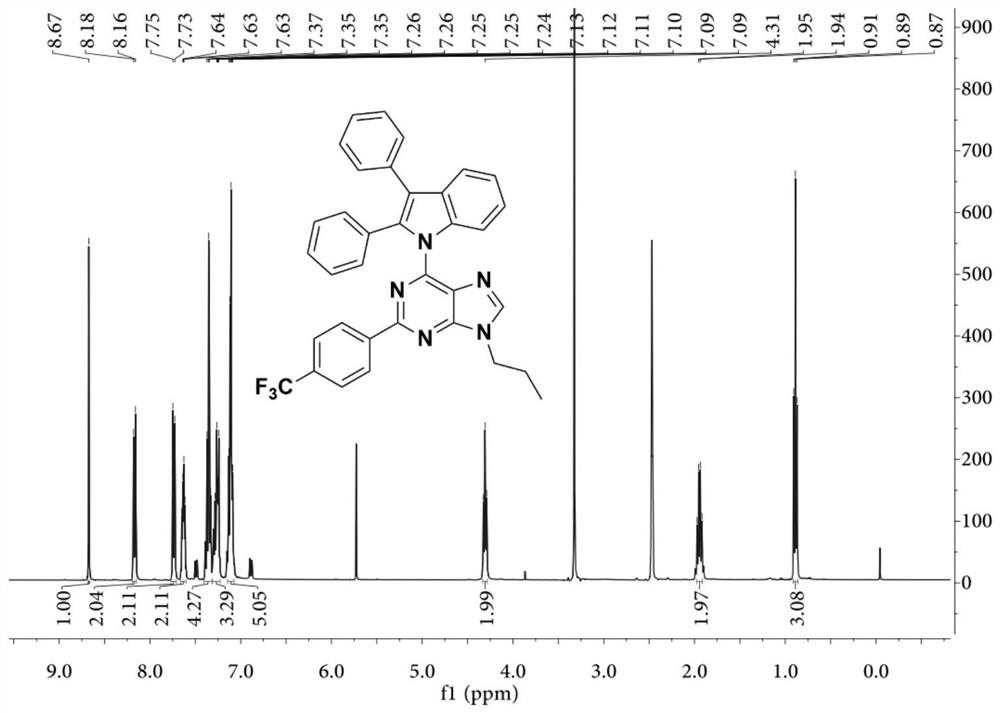Aggregation-inducible lipid droplet targeting staining reagent based on purine skeleton and its preparation method and application
A technology of aggregation induction and dyeing reagents, applied in the field of biochemistry, can solve the problems of poor photostability and small Stokes shift
- Summary
- Abstract
- Description
- Claims
- Application Information
AI Technical Summary
Problems solved by technology
Method used
Image
Examples
preparation example Construction
[0074] The preparation method of the aggregation-inducible lipid droplet targeted staining reagent based on the purine skeleton of the present invention comprises the following steps:
[0075] (1) 2,6-dichloropurine and R 1 Halide R 1 - X is dissolved in an organic solvent, and after adding a weak base, it is heated and stirred at 50-120°C for 4-12 hours to obtain the first intermediate; wherein, X is Cl, Br or I; the organic solvent is at least one of DMSO and DMF The weak base is at least one of sodium carbonate, potassium carbonate, potassium phosphate and sodium phosphate;
[0076] (2) Mix and stir the second intermediate, weak base and organic solvent for 1-2 hours, then add R 2 replaced Heat and stir at 50-100°C for 4-12 hours to obtain the second intermediate; the organic solvent is at least one of dioxane and tetrahydrofuran, and the weak base is n-butyllithium, potassium tert-butoxide, sodium tert-butoxide, At least one of potassium hydride, sodium hydride, potas...
Embodiment 1
[0079] The preparation method of the purine skeleton-based aggregation-inducible cell membrane targeting staining reagent of this embodiment comprises the following steps:
[0080] (1) Synthetic intermediate 1: 2,6-dichloro-9-n-propyl-9-hydro-purine (compound 1):
[0081]
[0082] 2,6-Dichloropurine (1.0 mmol), 1-bromopropane (1.5 mol) and potassium carbonate (3.0 mmol) were mixed and stirred in DMSO (5 mL) for 6 hours, then 100 mL of water was added. The organic layer was separated, and the aqueous layer was extracted with ethyl acetate (30 mL×3). The organic extracts were washed with brine and treated with Na 2 SO 4 dry. After the solvent was removed and distilled under reduced pressure, it was purified by 200-300 mesh silica gel column chromatography. Elution with petroleum ether / ethyl acetate (3:2) gave compound 1 as a white solid with a yield of 57%. The eluent is ethyl acetate / petroleum ether=2:3 (V / V). Finally, a white solid was obtained with a yield of 61%, an...
Embodiment 2
[0095] 6-(2,3-Diphenyl-1H-indol-1-yl)-9-propyl-2-(4-(trifluoromethyl)phenyl)-9H-purine (Compound 4)
[0096] This embodiment is basically the same as embodiment 1, the difference is that the compound Middle R 3 The substituent, its synthetic route is as follows:
[0097]
[0098] Under nitrogen protection, compound 2 (509mg, 1.1mmol), 4-trifluoromethylphenylboronic acid (1.5eq), tetrakistriphenylphosphopalladium (0.05eq) and 2.0mL sodium carbonate aqueous solution (2M) were added to 10.0mL In dioxane, reflux for 8 hours, and after the completion of the reaction as monitored by thin-layer chromatography, the reaction mixture was poured into 100 mL of water and extracted with dichloromethane. The organic layer was washed with brine, water, and Na 2 SO 4 dry. After the solvent was removed and distilled under reduced pressure, it was purified by 200-300 mesh silica gel column chromatography. Eluted with dichloromethane, compound 4 was obtained as a white solid with a yie...
PUM
 Login to View More
Login to View More Abstract
Description
Claims
Application Information
 Login to View More
Login to View More - R&D
- Intellectual Property
- Life Sciences
- Materials
- Tech Scout
- Unparalleled Data Quality
- Higher Quality Content
- 60% Fewer Hallucinations
Browse by: Latest US Patents, China's latest patents, Technical Efficacy Thesaurus, Application Domain, Technology Topic, Popular Technical Reports.
© 2025 PatSnap. All rights reserved.Legal|Privacy policy|Modern Slavery Act Transparency Statement|Sitemap|About US| Contact US: help@patsnap.com



